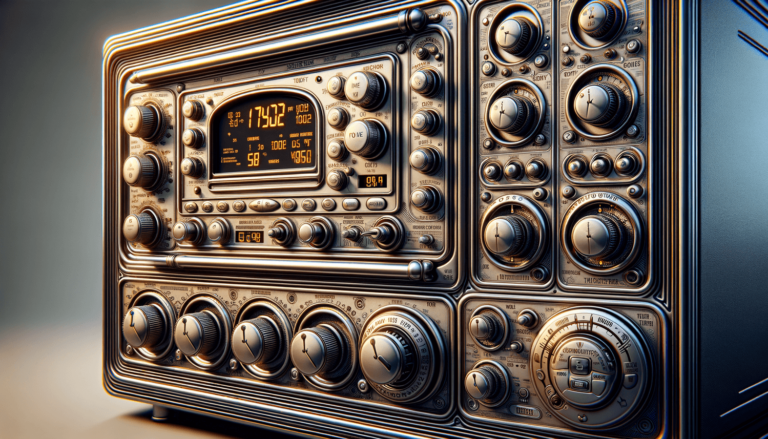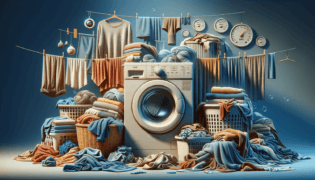

Welcome to our comprehensive guide on understanding and mastering Caloric Oven Settings! Caloric ovens have gained popularity due to their efficiency and reliability. However, with so many settings available, it can be quite daunting to grasp their purpose and determine their ideal usage. In this blog post, we will break down each setting and explain its function, ensuring you make the most out of your Caloric oven for delicious and perfectly cooked meals.
Let’s dive into the key Caloric Oven Settings to make the most out of your appliance:
This setting is ideal for baking multiple trays of cookies or cakes, as it uses a fan to circulate hot air uniformly around the oven cavity. This ensures even cooking, browning, and crisping, while also reducing cooking times.
Conventional Bake relies on the bottom and/or top heating elements to cook the food. It’s suitable for single-rack baking or dishes that need gradual heat, like custards or cheesecakes. Keep in mind that this setting may require rotating trays for even cooking.
Similar to Convection Bake, this setting utilizes the fan but with higher temperatures. This is perfect for roasted meats and vegetables, as it evenly browns and produces a crispy exterior while retaining moisture inside.
Broil uses the top heating element to cook food quickly at high temperatures. This is perfect for browning, melting, and crisping, such as cooking steaks, finishing casseroles, or melting cheese on top of dishes.
This mode maintains a low, consistent temperature; making it ideal for proofing bread dough. It creates a warm and humid environment that encourages yeast fermentation and dough rise.
As the name suggests, Warm keeps your already cooked food at a consistent temperature, ensuring it stays hot without overcooking. This setting is useful for dinner parties when you need to keep dishes warm until ready to serve.
This low-temperature mode distributes room-temperature air throughout the oven, allowing for a gentle and even defrosting process, without damaging or partially cooking delicate foods.
The Self-Cleaning setting heats the oven to extremely high temperatures for a set period of time, incinerating food residue and grease. After the cycle is completed, you can simply wipe away the remaining ash, making oven cleaning a breeze.
Understanding these settings and their functions will empower you to harness the full potential of your Caloric oven, resulting in perfectly cooked meals every time.
Developing your skills with these settings will transform your cooking experience. To provide more insight, we’ve gathered some useful tips to help you get the most out of your Caloric oven.
When using Convection Bake or Roast settings, ensure there is enough space between your oven racks and dishes, as proper air circulation is essential for even cooking. At the same time, avoid covering your dishes, as exposure to air circulation contributes to the desired results.
Embrace the Conventional Bake setting for single-rack baking. When baking pastries and pies, use the bottom rack to achieve a beautiful, crispy crust. Conversely, employ the top rack for dishes requiring a golden-brown finish like gratins or stuffed vegetables.
By combining settings, the Settings King team has discovered that you can create stunning results. Begin by using the Convection Bake or Roast setting for even cooking, then switch to the Broil mode briefly to provide a gorgeous, crispy finish to your dish.
When using the Warm setting, cover your dishes with aluminum foil or oven-safe lids to retain moisture. This practice will prevent food from drying out during the temperature maintenance period.
It is essential to note that using convection modes may require reducing cook times or temperatures relative to the recipe specifications. Experimenting with your oven settings will reveal the ideal time and temperature for consistently perfect results.
With these supplementary insights, you’re now ready to bring out the best in your Caloric oven and impress family and friends with your culinary mastery.
Along with understanding the various Caloric oven settings, it’s crucial to keep your oven well-maintained for the best cooking results. Take into account the following tips for a smooth and optimally performing oven:
Checking and cleaning the oven door seals regularly ensures heat is retained within the oven cavity and maintains consistent cooking temperatures. If you discover any damage or wear, replace the seals promptly to avoid further heat loss.
If you notice inconsistencies in your cooking results, consider calibrating your oven temperature. You can purchase an oven thermometer, determine the discrepancies, and make adjustments accordingly. The Settings King team recommends doing this at least once a year to maintain precise temperature control.
Getting to know your Caloric oven settings and maintaining a well-functioning appliance opens up a world of culinary possibilities. By confidently utilizing each setting, you’ll have the versatility to tackle elaborate dishes, bake flawless pastries, and create finger-licking roasts with ease.
As an avid home cook, the Settings King team encourages you to embrace this newfound knowledge and try out new recipes, furthering your understanding of each setting. You’ll find a wealth of delicious ideas to explore on our blog, Settings King, ensuring you’ll never run out of inspiration for your next kitchen adventure.
We understand that you might have additional questions about Caloric oven settings. Therefore, we’ve compiled a list of common questions and their answers to address any lingering concerns you may have.
Yes, you can use regular bakeware in Convection mode. However, it is recommended to choose shallow and light-colored bakeware to enable better heat reflection and circulation around the food.
A conventional bake relies on bottom and/or top heating elements for cooking, while a convection bake uses a fan to circulate hot air uniformly within the oven. This leads to faster cooking times, even browning, and a more consistent texture in a convection bake setting.
The Broil setting is best suited for quick, high-heat cooking and browning. Use this mode for tasks such as melting cheese on top of a dish, finishing a casserole, or cooking a steak to get a nice sear.
It is recommended to preheat your oven before using Convection Bake or Roast settings, as this ensures the oven reaches the desired temperature before you begin cooking. Preheating usually takes around 10-15 minutes, depending on the oven and temperature setting.
While convection cooking is versatile, there are a few instances where it might not be suitable. Dishes that require a moist environment, like soufflés, custards, and some cakes, might not fare well with the fast and dry heat of convection cooking. It’s best to stick with conventional settings for these types of recipes.